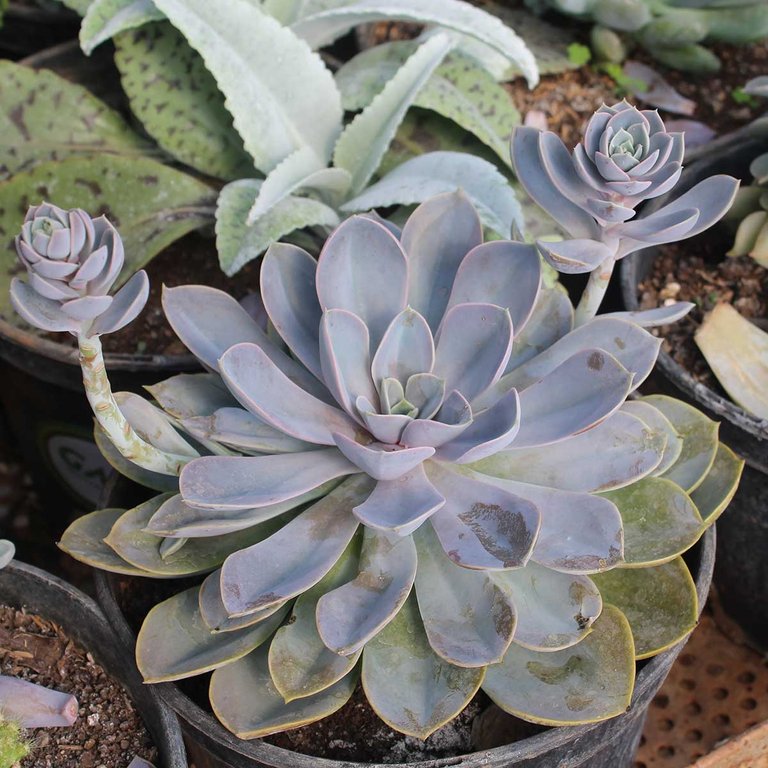Hello Hivers passionate about growing succulent plants in this community. Today's summary will be focused on the necessary cultivation requirements of a group of succulents that is very popular in the world of collecting. This genus is known as Echeveria and has more than 350 described species originating from Central and South America. They are small herbaceous plants that are quite prolific (with some slow-growing exceptions). They are characterized by forming rosettes of fleshy leaves, generally very pruinose, with central cylindrical stems. The flowers are in lateral clusters and have a bell shape. These flowers have greenish, red or yellow colors. These plants are generally confused with species from nearby genera such as Pachyphytum, Dudleya, Graptopetalum, among others. In addition, hundreds of hybrids of this genus have been achieved (even with other genera) with variations in the coloration, shape and size of the rosettes. Also variations in the flowers, although they are not the most sought after aesthetic characteristics.
Below, an extremely beautiful representative of the genus:

To grow succulents of the Echeveria genus, the following tips should be followed:
- They should be grown in areas with very good lighting, but not completely exposed to the sun to avoid burns. They grow very well in semi-shade.
- Water 1-2 times a week if temperatures are warm. They are quite resistant to periods of drought.
- Use a light, nutrient-rich substrate that allows rapid drainage of irrigation water.
- They develop best under the influence of temperatures above 22ºC for most of the year.
- Mainly attacked by mealybugs that invade all plants. They can also be affected by insect larvae, mites, aphids, pathogenic fungi and snails.
- They reproduce mainly by cuttings of stems, leaves and seeds.